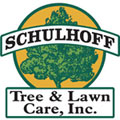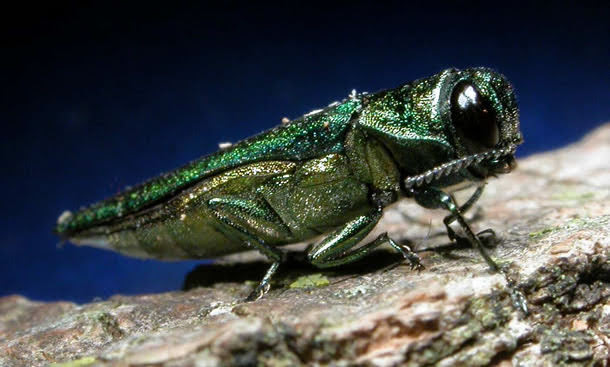Is your beautiful ash tree susceptible to the emerald ash borer? This growing pest problem has damaged trees throughout 35 states, including Colorado. What does the emerald ash borer mean for your trees? What can you do to protect them? And what challenges do you face when dealing with an infestation? Here are some important answers to your questions.
What Is the Emerald Ash Borer?
The emerald ash borer is a beetle that arrived in North America from its native regions in China, Russia, Japan, and other nearby countries. It was noticed in the United States in 2002 and has since spread to many states and affected millions of trees. While it primarily affects all species of ash trees, other species may also be at risk.
What damage does the ash borer cause? The most common symptoms of infested trees are wilting or yellowing foliage, beetle-created holes in the bark, sprouts forming along the trunk, and unusually extensive woodpecker damage (as the birds attempt to get to the beetles). If left untreated, beetle infestations can kill the tree and spread to nearby trees.
How Can You Treat the Emerald Ash Borer?
The best way to protect your trees is to prevent the emerald ash borer beetle from taking hold. This means that if the tree is in an area known for infestations or around trees known to have been infested, it should be treated preventatively. Owners often need to continue treatments annually to prevent further pest problems.
What treatments are available? The most effective is the delivery of an insecticide directly to the tree’s circulatory system. Most professionals use imidacloprid, delivered using tree injections or soil injections.
To inject the tree itself, a professional drills a small strategic hole in the bark. This entry point must be pinpointed to reach deep enough to make contact with the tree’s vascular system but not so deep that it harms the trunk. Direct tree injections ensure that the entire treatment goes exactly where you want it to go. It also prevents overspill or the spread of chemicals on other plants.
A less invasive technique for applying imidacloprid is to mix it into a solution and apply it to the ground over the tree’s roots. The insecticide naturally soaks into the soil — a method called soil injections or a soil drench — and is taken in by the roots. However, while this is an easier way, it may not get the job done as well. The liquid may not completely reach the roots or it may not be the right mix.
Insecticide treatment is the best way to protect unaffected trees or those which have the early stages of an infestation. The more aggressive treatments can also help trees with more advanced cases.
What If Treatment Isn’t Possible?
Unfortunately, severe infestations may be more than the insecticide applications can handle. In this case, the tree owner and arborist may determine that the only way to protect surrounding trees — both on your property and around it — is to remove the infested tree entirely. The good news is that you can replace it with a new ash tree that is treated preventatively from the start.
When is the right time to cut down an affected tree rather than treat it? This decision is up to each owner. Large, mature, and otherwise healthy trees have aesthetic and financial value. If the infestation hasn’t gone too far, it’s often worth trying to save them through injections and care. However, you must weigh the value of the tree versus the cost of continual treatment for the ash borer.
How Can You Minimize Your Risk?
Colorado properties are already at risk of emerald ash borer infestations. But you can minimize the risk with some preventative steps. First, know where your wood comes from. Whether it’s new trees that will be planted or firewood, find out where the wood comes from and whether it has a high or low risk of already being infested. And avoid placing possibly-infested trees or wood near unaffected trees.
Stay alert to the signs of beetle infestation and inspect your trees regularly. Schedule regular tree care by professional arborists. Talk with them and your neighbors about any potential signs of infestation problems in the area. And if you do see symptoms of ash borer damage, don’t wait to start treating. Also, understand when a tree must be sacrificed to save others.
Where Can You Learn More?
Much has been said about the arrival of and the tree damage caused by the emerald ash borer. If your trees are at risk, start by learning the facts and making a plan to save them. Schulhoff Tree & Lawn Care, Inc., can help. We’ve assisted land owners throughout the Denver metro area for eight decades. Call today to learn how we can help you keep your trees healthy and pest-free.

